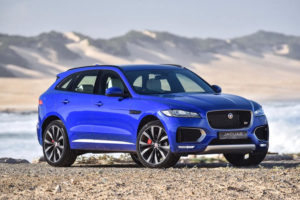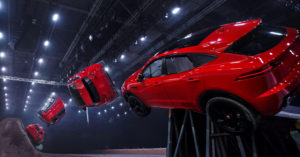2004 – 2016
Jaguar design was reinvigorated in the new millennium. It evolved, building on its recent years but moving above and beyond some of the more conservative, retrospective designs. It started to take on a whole new outlook. In large part, this was driven by Ian Callum, Jaguar Director of Design since 1997. The following two decades have breathed new life into the Jaguar family, taking inspiration and vitality from the past and reimagining it for today.
“If you look at any Jaguar in history, the one thing it’s got against all the other cars is that it’s always a more exciting shape. When you see a Jaguar on the road it catches the corner of your eye and you want turn around and look at it. That’s what a Jaguar must do. So that’s where we start off.” Ian Callum, Jaguar Director of Design
2006: A New Design Direction
The 2006 XK was the first new Jaguar of the millennium, and the first designed under the aegis of Ian Callum. From the echoes of the Jaguar E‑type in the grille and rear lights, to its innovative aluminium monocoque construction, the references to the great past Jaguars are there. But the XK is clearly a product of the 21st century. It was elegance, redefined with deft touch.
2007: Farewell Ford
On 11 June 2007, Ford announced that it planned to sell Jaguar, along with Land Rover and retained the services of Goldman Sachs, Morgan Stanley and HSBC to advise it on the deal. The sale was initially expected to be announced by September 2007, but was delayed until March 2008. Private equity firms such as Alchemy Partners of the UK, TPG Capital, Ripplewood Holdings (which hired former Ford Europe executive Sir Nick Scheele to head its bid), Cerberus Capital Management and One Equity Partners (owned by JP Morgan Chase and managed by former Ford executive Jacques Nasser) of the US, Tata Motors of India and a consortium comprising Mahindra and Mahindra (an automobile manufacturer from India) and Apollo Management all initially expressed interest in purchasing the marques from the Ford Motor Company.
2007: Breaking The Mould
The Jaguar XF infused the refinement of the saloon with the excitement of a sports car. Its design broke the mould, with a crouched stance that hinted at its explosive power even when at rest. The Mark 2 had created the sporting saloon sector, and the XF was a worthy continuation of this design innovation.
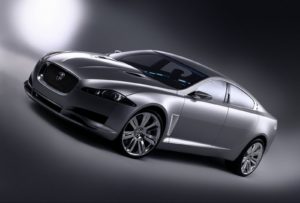 This was the first car designed from scratch under Ian Callum. Replacing the S‑type, the XF was evolved Jaguar into a 21st century manufacturer. Old and new came together to produce design that turned heads; the sportiness from the low roof and the slightly high beltline combined effortlessly with the recognisable grille of the original XJ.
This was the first car designed from scratch under Ian Callum. Replacing the S‑type, the XF was evolved Jaguar into a 21st century manufacturer. Old and new came together to produce design that turned heads; the sportiness from the low roof and the slightly high beltline combined effortlessly with the recognisable grille of the original XJ.
Now updated in 2015, its evolution continues. Longer, sleeker and more elegant, but still harbouring impressive power and an innate sports outlook, the XF continues to redefine design, luxury, technology and performance for the business car segment.
2008 The Tata Era
On 26 March 2008, Ford announced that it had agreed to sell its Jaguar and Land Rover operations to Tata Motors of India, and that they expected to complete the sale by the end of the second quarter of 2008. Included in the deal were the rights to three other British brands, Jaguar's own Daimler, as well as two dormant brands Lanchester and Rover. On 2 June 2008, the sale to Tata was completed at a cost of £1.7 billion.
On 18 January 2008, Tata Motors, a part of the Tata Group, established Jaguar Land Rover Limited as a British-registered and wholly owned subsidiary. The company was to be used as a holding company for the acquisition of the two businesses from Ford – Jaguar Cars Limited and Land Rover. That acquisition was completed on 2 June 2008. On 1 January 2013, the group, which had been operating as two separate companies, underwent a fundamental restructuring. The parent company was renamed to Jaguar Land Rover Automotive PLC, Jaguar Cars Limited was renamed to Jaguar Land Rover Limited and the assets (excluding certain Chinese interests) of Land Rover were transferred to it.
Dr Ralph Speth Announced as CEO
Dr Ralf Speth was appointed to the post of Chief Executive Officer at Jaguar Land Rover on February 18, 2010. Prior to this appointment, he was Head of Global Operations at the international industrial gases and engineering company, The Linde Group. Dr Speth started his business career at BMW leaving after 20 years to join Ford Motor Company's Premier Automotive Group (PAG). He earned a Doctorate of Engineering and is an Industrial Professor at the University of Warwick. He has also been awarded a Fellowship of the Royal Academy of Engineering. Born in Roth, Germany, he is married with two daughters.
2010: Redefining Luxury
The XJ is a constant in the Jaguar line up, but here it made a clean break from its recent past. This was a design that aimed to get back to the exciting outlook of 1968. There are the nods to the XJ6 with the exaggerated grille and the power bulge in the bonnet. Callum sees these as a visual influence from the past, reinvented in a very modern way.
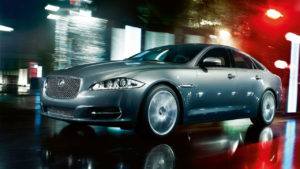 The XJ carries the same striking sense of drama from the 1960s, combined with unparalleled luxury and cutting edge technology. Now in its tenth iteration, the 2016 model year XJ continues to redefine luxury.
The XJ carries the same striking sense of drama from the 1960s, combined with unparalleled luxury and cutting edge technology. Now in its tenth iteration, the 2016 model year XJ continues to redefine luxury.
2012 and 2013: Moving Forwards
The F‑TYPE is the true embodiment of the Jaguar marque. Its thrilling performance is coupled with design touches that both lead Jaguar forwards and hark back to its heritage, with a clear influence from E‑type. The new interpretation of the bold Jaguar grille shows this intent, differentiating itself while reflecting the same values of the past decades. The personality of F‑TYPE is characterised by the cockpit-rearward stance, power bulge on the sweeping clamshell bonnet, and muscular rear haunches. It’s clear that F‑TYPE is the spiritual successor to E‑type.
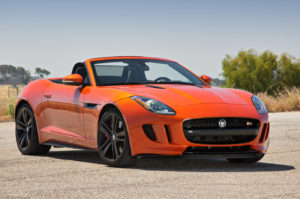 “[Jaguars] don’t have to look the identical, but the values have to be the same. Powerful, dramatic, and just that 10% different to everyone else on the road” Ian Callum, Jaguar Director of Design
“[Jaguars] don’t have to look the identical, but the values have to be the same. Powerful, dramatic, and just that 10% different to everyone else on the road” Ian Callum, Jaguar Director of Design
The F‑TYPE was initially launched as a convertible only model. Following in the footsteps of the E‑type, an F‑TYPE coupé followed a year later. And now, the 2016 F‑TYPE is setting new standards for driving dynamics and performance.
2014: A New Addition
The XE redefined the sports saloon, and changed the face of Jaguar forever. The design couples outstanding aerodynamics with exciting, compact proportions – built on the foundation of cutting-edge Aluminium Intensive Architecture. This focus on functional yet beautiful design makes the XE a driver’s car. Malcolm Sayers’ mantra of form following function is clearly present with XE, a stunning car with performance to match.
2016: The First Performance SUV
The F‑PACE opens a new chapter in Jaguar design history as the first of our performance SUVs. Continuing the tradition of redefining segments, the creation of F‑PACE is a step change which demonstrates that Jaguar design innovation is alive and well.
The design of the F‑PACE draws on the F‑TYPE, with its sleek exterior lines combined with spacious interior. Ian Callum set out to design a Jaguar with the dimensions of an SUV, rather than making the Jaguar spirit fit into a predetermined mould. This allowed the influence of F‑TYPE to be reflected within F‑PACE’s design. Grace, space and pace – that’s what F‑PACE delivers.
2017: The Next One
The Jaguar E-Pace is a five-door compact luxury crossover SUV. It was officially revealed on 13 July 2017 and was the 2nd production Jaguar SUV. The car is built in Graz, Austria, by Magna Steyr and from 2018 is also scheduled to be built by Chery Jaguar Land Rover, JLR's joint venture with partner Chery, in Changshu, China. Designed under the direction of Jaguar chief designer Ian Callum, the car is based on a modified version of the steel PTA platform, as used by the Range Rover Evoque. The car has a transverse front engine and is available in both front-wheel drive and all-wheel drive versions.
Stunt driver Terry Grant performed a world record barrel roll jump in the car for the reveal which took place at the London ExCel centre. The car did a 270-degree barrel roll and travelled over 15 metres through the air.
2019: The Electric SUV
The I-PACE is a battery-electric crossover SUV and was announced in March 2018. It is the first electric SUV from a premium European automaker. In its first year, the I-PACE became one of the most highly decorated production cars ever, winning 62 international awards. In March 2019, it won the European Car of the Year award, the first Jaguar to win in the 50-year history of the award. In April 2019, the I-Pace became the 2019 World Car of the Year, and by also winning Best Design and Best Green Car awards, it became the first car to ever sweep three of the six categories.
The concept version of the car, described as a five-seater sports car, was unveiled by JLR at the 2016 Los Angeles Motor Show and shown on-road in London in March 2017. The I-PACE is built by contract manufacturer Magna Steyr in Graz, Austria, and the production version was revealed in Graz in March 2018. Some of the electric drive technology has come out of the Jaguar I-TYPE electric Formula E racing car programme, and the concentric motors were developed in-house by JLR
Thierry Bolloré Is New CEO
Mr Chandrasekaran, Chairman of Tata Sons, Tata Motors and Jaguar Land Rover Automotive plc would like to announce that Mr Thierry Bolloré has been appointed to the role of Chief Executive Officer of Jaguar Land Rover, effective 10 September 2020.
"I am delighted to welcome Thierry to Jaguar Land Rover. An established global business leader with a proven track record of implementing complex transformations, Thierry will bring a wealth of experience to one of the most revered positions in the industry" said Mr Chandrasekaran.
Mr Bolloré has extensive expertise in the automotive business, most recently as CEO of Groupe Renault and previously in senior positions at global automotive supplier Faurecia.
Reimagine
Jaguar Land Rover will reimagine the future of modern luxury by design through its two distinct, British brands. Set against a canvas of true sustainability, Jaguar Land Rover will become a more agile creator of the world’s most desirable luxury vehicles and services for the most discerning of customers. A strategy that is designed to create a new benchmark in environmental, societal and community impact for a luxury business. At the heart of its Reimagine plan will be the electrification of both Land Rover and Jaguar brands on separate architectures with two clear, unique personalities.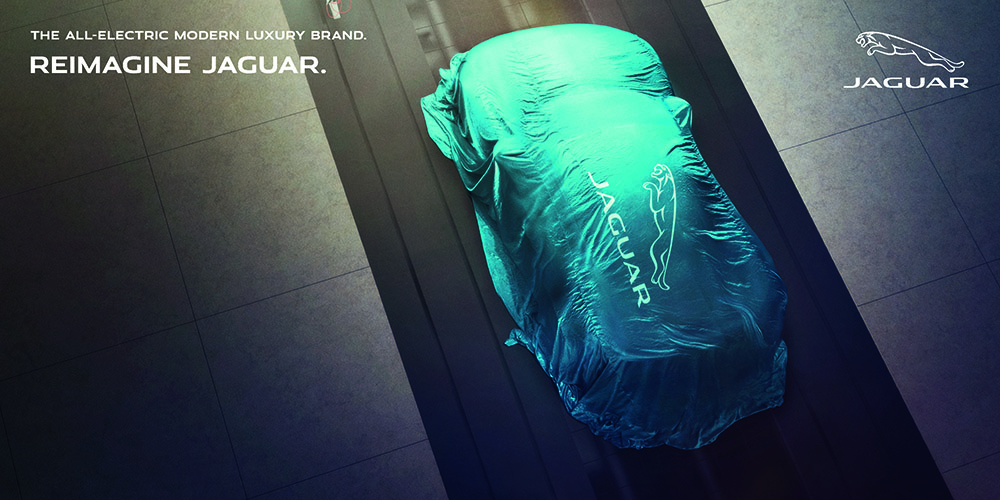
By the middle of the decade, Jaguar will have undergone a renaissance to emerge as a pure electric luxury brand with a dramatically beautiful new portfolio of emotionally engaging designs and pioneering next-generation technologies. Jaguar will exist to make life extraordinary by creating dramatically beautiful automotive experiences that leave its customers feeling unique and rewarded.


